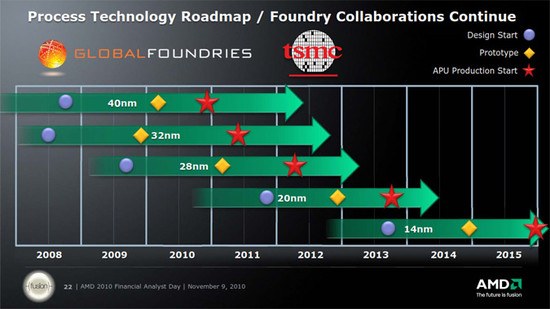The smartphone market is growing fast and everyone wants a piece of it. Intel is working hard on getting its Atom architecture into future smartphones, but so far it doesn’t have a single design win to show for it. AMD is the second x86 manufacturer, but once again it has emphasized that it has no plans for that particular market.
There have been rumors of AMD going into smartphones with its new Bobcat architecture and its knowledge in graphics. It certainly has the tools for creating a SoC, but apparently there are no plans for the smartphone industry.

This is not really that odd since Intel is having problems to show any real advantages of its architecture over the existing ones. The reason for this is that ARM-based SoCs are simply more efficient, while costing less than Intel’s solution. ARM license its architectures to companies that can then adjust it to their liking, while x86 manufacturers keep their designs in-house and sell as a final package. A market strategy both ARM and its partners, like Qualcomm, says doesn’t work.
AMD’s Rick Bergman says that it has no plans to announce handheld units, but that it will focus on the market where it has the biggest possibilities, but it does not exclude it from any future ventures.
We haven’t announced any plans to go in that handheld space. We’ve got plenty of opportunities… in server, notebook and now tablets, that’s our immediate focus. But if the right circumstances come up and we can see a way to impact the market, we’ll obviously continue to look.
AMD rather focus on its Fusion concept for notebooks, tablets and also servers in the future. The new Z series is tailored for notebooks down to 5.9W TDP, while a successor will come down to 4.5W TDP with the exact same performance but some pieces cut from the silicon that is not needed in a tablet.

The new platform Deccan is slated for early next year
At 28nm it has a successor to the Brazos platform coming. Deccan will offer up to four cores, better graphics than before and an integrated northbridge. During AMD Analyst Day last year there was talk about a “sweet spot” for tablets at around 3W TDP, which is where Wichita would enter. A tablet has bigger cooling possibilities and larger batterier than a smartphone, where a SoC os far below 1W.
Source: PCWorld















